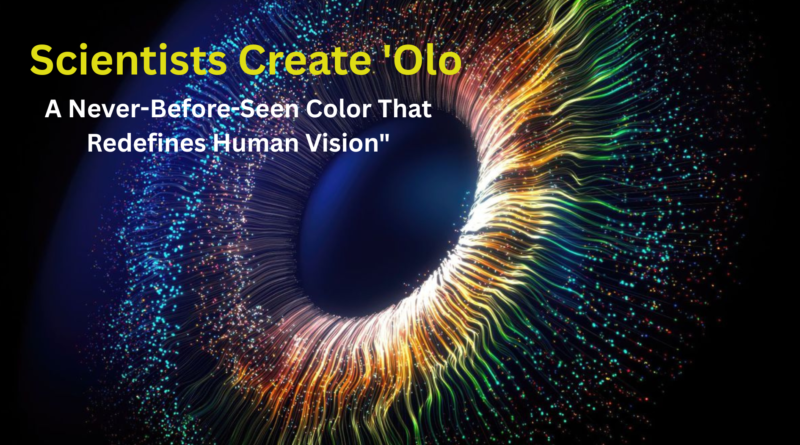“Scientists Create ‘Olo’: A Never-Before-Seen Color That Redefines Human Vision”
In a groundbreaking advancement in the field of visual neuroscience and perception, scientists have introduced a completely new color, termed “Olo.” Unlike the typical discovery of colors through pigments or light wavelengths, “Olo” is not a color that exists naturally in the physical world. Instead, it is a perceptual phenomenon created by precisely stimulating the three types of color receptors (cones) in the human eye in a way that has never been done before. This artificial stimulation tricks the brain into seeing a new color experience that does not fall within the traditional color wheel.
The technology behind “Olo” comes from a method called Oz, which allows researchers to bypass natural light and directly activate the cones in the retina using specific visual patterns or neural inputs. This precise modulation opens the door to color experiences that have no equivalent in nature or current digital displays. The result is a perception of color that observers describe as unfamiliar yet vivid, suggesting it could occupy a new space in our perceptual universe.
“Olo” has important implications beyond scientific curiosity. One promising application is in aiding those with color vision deficiencies. By customizing the way light stimulates cones, it may become possible to create perceptual experiences for colorblind individuals that mimic colors they typically cannot see. Furthermore, this breakthrough could lead to entirely new ways of rendering color in digital art, virtual reality, and screen technology, pushing past the limitations of RGB (red, green, blue) color systems.
This discovery also challenges our traditional understanding of color as a purely physical property of light. Instead, it emphasizes that color is fundamentally a construct of the brain shaped by how it interprets signals from the eye. “Olo” marks a shift toward a new frontier in sensory augmentation, where perception itself can be engineered, extending human experience into realms previously thought impossible. As research progresses, “Olo” may be just the beginning of a broader revolution in how we understand and manipulate sensory reality.




